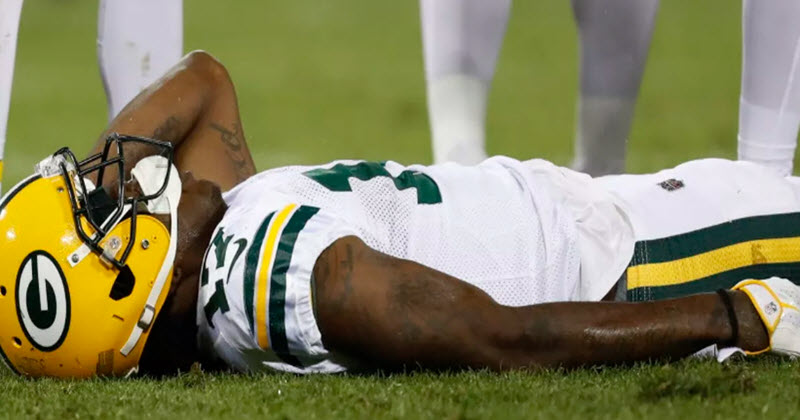Head Injuries, And The Impending Fall Of Football

There is no way football, specifically the NFL, won’t be the biggest sport in America the rest of our lifetimes, right? Per Gallup polling, football overtook baseball as the most popular sport in the U.S.A. in 1972, and has been #1 ever since. And not only has it been #1 for almost a half century, to this day it continues to get bigger and more popular. Truly remarkable. Seems reasonable to believe this trend will continue for the foreseeable future.
Head injuries continue to be a problem in the NFL, they have for years. As early as 1994, Commissioner Paul Tagliabue setup the MTBI (Mild Traumatic Brain Injury) Committee, a group directed to research the effects of brain injuries on NFL players. Dr. Elliot Pellman was appointed Chairman of this Committee. Worth noting – Pellman was not a neurologist, and often admitted ignorance about head injuries. Interesting appointment to head that Committee. Over the next 15 years or so, this Committee and the NFL continued to put out information that head injuries, specifically concussions, were not something that needed to be taken too seriously. Tagliabue even said the issue of concussions was a “journalistic issue”, essentially blaming the writers for creating this problem.
A few other events to note during this timeframe: Hall of Famer Troy Aikman gets knocked out cold, in a game to this day he has no recollection of. Another Hall of Famer, Steve Young, also gets knocked out cold on a play, ending his career. Former lineman Mike Webster is deemed “totally and permanently disabled” by NFL Retirement Board, from injuries sustained by playing in the NFL. A couple years later Webster’s brain was found to have CTE (Chronic Traumatic Encephalopathy), which was the first time this was found in an NFL player’s brain. Dr. Pellman (Chair of the MTBI), then the Jet’s team doctor, sends WE Wayne Chrebet back into a game after he was knocked unconscious. MTBI puts out statement claiming that NFL Players are “less susceptible to post-concussion syndrome” than the general population. OK. And in this timeframe, several former NFL’ers, with evidence of CTE found in their brain, commit suicide. Not until 2009, 15 years after the MBTI was formed, does the NFL formally acknowledge that concussions have long-term effects on the brain. Side note – In 2013, the NFL agreed to pay $765 million to settle a lawsuit by former NFL players who were suffering from post-football brain trauma. As part of the settlement, the league doesn’t admit any wrongdoing. Commissioner Roger Goodell goes as far as to say “There was no admission of guilt. There was no admission that anything was caused by football.”
Why does this matter, and how does this impact football as being the #1 sport in America? Well, a couple reasons. One of these we are already starting to see. Slowly, but it is starting to happen. First, let’s examine other countries. Why is hockey the biggest sport in Canada & Russia? Why is soccer the most popular sport in most South American countries? Why is cricket so popular in India and Pakistan? Usually, it’s because the best athletes in those countries, play those sports. The product on the field is the best the country has to offer, in terms of athletics. That’s what people want to watch. The best. Currently, that is the case with football in the States. I don’t think that part will change for a while, as our young athletes will be always gravitated towards football. It’s a masculine, brawny, tough-guy sport. An alpha-dog sport. What’s not to like? Although that will remain true, it’s not the kids themselves that will make this change right away.
Who signs these kids up for youth sports? Parents, often times Moms. The more that is written and reported about the dangers (both short-term and long-term) of football, specifically the brain injuries, the more hesitant these parents are going to be about signing their sons up for football. And can you blame them? Our son played flag-football for 3 years, and when he was old enough for tackle football, we had a decision to make. We ultimately did allow him to play, but with some reservation. Caveat – I LOVE football, and always looked forward to my son playing. But even I was hesitant. He ultimately didn’t like it, and chose not to play the following year, so our future decisions regarding this were no longer relevant. But, we do know a lot of parents in the same predicament. At this point, roughly 2/3 of the parents we talked to did let their boys play. Still the majority, but what was the percentage 20 years ago? Close to 100%? If that trend continues down, the obvious impact is that the feeder system (youth football) will see their numbers go down. Fewer youth players, fewer players for the high schools to choose from, which trickles up to college and ultimately the NFL. Like I noted before, one of the main reasons the football is the top dog in the U.S.A. is that because many of our best athletes are playing it. There are many, many options available for youth sports. Emphasis on many. If these parents will not allow their kids to play tackle football, or even at minimum steer them towards other sports, the demise of football may begin at the youth level. As I said, I am a huge NFL fan (my Sundays revolve around the Packers games!), but I understand where the hesitation is coming from. You can call the parents, or even the kids soft, but the chances of a serious head injury seem to far outweigh the chances of making millions in the NFL.
The other reason I can see football declining is, ironically, money. The NFL, hell, even college football basically prints money these days. The NFL revenue in 2018 was roughly 10 billion dollars (depends on what report you read). 10 BILLION. So you wonder how money will affect football? That $765 million settlement the NFL agreed to in 2013 (even though they admitted no wrong-doing)…how long until that happens again? As much as the NFL “tries” to address this problem, the reality is that these players keep getting bigger, faster, and stronger. Which inevitably means harder, more vicious hits. These concussions are not going away, and when the next generation of players retire and start having these long-term problems, seems likely another lawsuit is coming. And the precedent has been set, the NFL may be held financially liable again. As much money as the NFL rakes in, can they continue to pay these settlements? Time may tell. Another thing that doesn’t get brought up often, is the insurance premiums that these programs have to pay. From youth football, all the way up to the NFL, these programs have insurance they need to pay to cover their players. The NFL has the money to pay these premiums, but as the costs to continue to rise, will the youth programs have that money? If not, there is no youth football. Even at the high school level, will schools always be able to afford this? Perhaps not. As noted before, the more the feeder system diminishes, the less quality, top-notch athletes are available. To take it even a step further, will there come a point where the insurance companies no longer insure football programs. Seems like a possibility. The expenses of the actual injuries can be high enough, and that doesn’t even factor in the potential lawsuits.
Another thing to mention, and to some this may seem far-fetched, but it’s at least worth bringing up. What will happen when a player dies on the field? Tell me you haven’t been watching a game, and a player’s head gets absolutely rocked and he drops to the field and lies there motionless…and the thought at least doesn’t come to your mind that you just saw a player get killed. I have. Danny Trevathan’s hit on Davante Adams on opening Sunday Night 2018 comes to mind. I genuinely hope that never happens, but I have been fearing that for about 10 years. It could happen. And if it does, tell me how Mama Pam reading about it the next morning reacts. No more football for little Johnny. Football as we know it may come to a screeching halt.
Look, I am a HUGE football fan. It drives so much of my life from about mid-August until the Super Bowl. Fantasy drafts, Thursday nights, 12+ hours on Sundays, Monday nights, the articles, the banter. I love everything about it. But I wonder what it will look like in 20 years. Will it be the same? I sincerely hope so, but you have to wonder.
Like this article? Share it on Twitter or Facebook. Like us? Follow us on Twitter (@big3sportsblog1) or like our Facebook page (@big3sportsblog). Not a fan? Tell us why!
